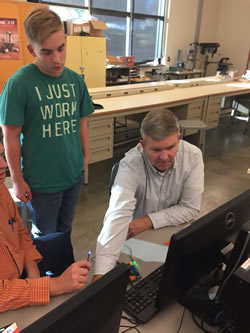The annual Three Rivers Educational Technology Conference (TRETC) was hosted November 3-4, 2015 at the…
Implementing YouTube for Schools isn’t as easy as you may think
The Children’s Internet Protection Act (CIPA) requires that schools and libraries that receive funding from the federal E-rate program monitor minors’ online activities and block or filter content that is obscene, contains child pornography, or is “harmful to minors.” Restricting children’s access to obscene and pornographic content at school sounds perfectly reasonable in theory. But in practice many schools actually filter a lot more than that, blocking access to some of the most popular Web 2.0 sites — Dropbox, Skype, Twitter, Wikipedia, Facebook and YouTube, for example.
With many of our schools blocking access to YouTube as a way to protect students from content that is inappropriate — or worse — the online video site opened a new network that allows access only to content that can be used in the classroom. The network setting, YouTube for Schools, gives schools the option to sign up with the Web site’s education channel, YouTube for Schools. By signing up, schools automatically disable certain features, including the ability to make comments on posted videos, and other distractions to student learning, YouTube announced.
Questeq engineers are researching solutions to access this service. Currently most of our content filters are blocking youtube.com at the domain level which makes the implementation of youtube.com/schools extremely difficult because most content filters only allow exclusions at the host level. Questeq engineers continue to work with our site Directors to develop a solution to the problem.


This Post Has 0 Comments